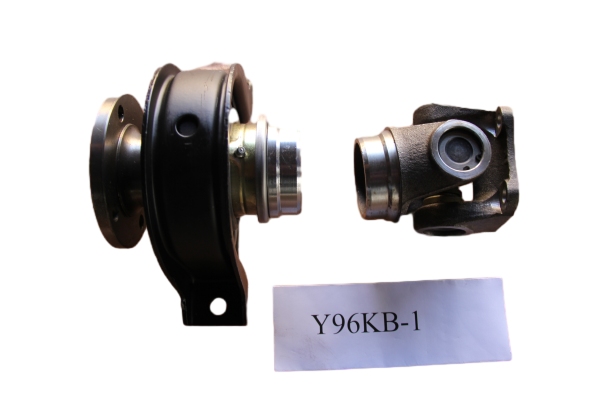
Modern mechanical driving systems depend much on transmission shafts. Transmission shafts, a basic component in charge of transferring power and rotational motion from engines or motors to working components, guarantee efficient energy delivery across many applications. Engineered to satisfy rigorous performance, durability, and safety criteria from cars and industrial equipment to aircraft and robots, these shafts span a wide range. Engineers, technicians, and hobbyists will find this article’s thorough analysis of transmission shafts—covering their fundamental ideas, classifications, design principles, manufacturing techniques, applications, maintenance, and future trends—helpful.
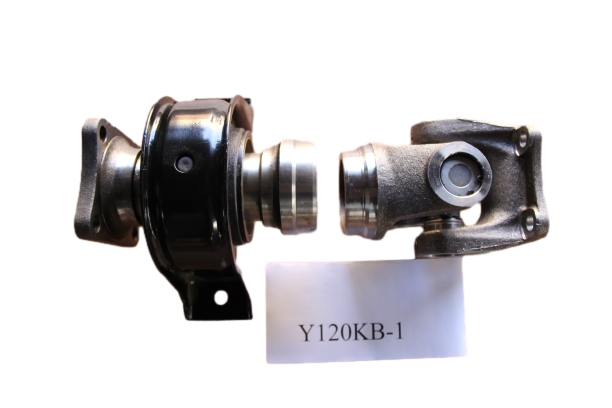
Beijing 130 Transmission Shaft
1. Basic Concept of Transmission Shafts
Designed to transfer torque and rotational energy from a power source to driven components, a transmission shaft is a mechanical part. Essentially, it converts and transfers the energy needed for the operation of several systems, hence bridging the motor and the load. Engineered to resist great pressures like torsion, bending, and dynamic loading, transmission shafts are crucial. Their design guarantees not only effective power transmission but also long-term dependability in various working environments.
Advances in materials science and manufacturing technology have allowed the creation of transmission shafts satisfying ever more rigorous performance requirements over time. From conventional combustion engine cars and heavy equipment to modern industries including electric cars, robots, and aerospace, these shafts are today essential.
2. Types of Transmission Shafts
Transmission shafts come in a variety of forms, each tailored to specific operational requirements. Here are some of the most common types:
2.1 Solid Shafts
Solid shafts are typically manufactured from a single, homogeneous piece of metal, often high-strength alloy steel. Their robust construction provides high torsional and bending strength, making them ideal for heavy-duty applications where high torque and impact loads are prevalent. Common applications include:
-
Heavy machinery and industrial equipment.
-
Conventional vehicles where robust power transmission is critical.
2.2 Hollow Shafts
Hollow shafts feature a cylindrical tube-like design with a void in the center, significantly reducing weight while maintaining substantial torsional rigidity. The reduction in weight lowers the moment of inertia, which is beneficial for high-speed applications and improves dynamic response. Due to these advantages, hollow shafts are frequently used in:
-
Aerospace applications, such as landing gear systems.
-
High-performance and racing vehicles.
-
Electric vehicles where efficiency and light weight are paramount.
2.3 Universal Joint Shafts
When the driving and driven components are not perfectly aligned, universal joint shafts are employed. These shafts incorporate universal joints (or U-joints) that allow for angular misalignment between connected parts while effectively transmitting power. They are particularly useful in:
-
Automotive drive systems, such as rear axle drives.
-
Agricultural and construction equipment.
-
Any application where variable alignment is encountered.
2.4 Flexible Shafts
Flexible shafts are designed to accommodate slight bends and complex motion patterns. Often constructed from bundled metal wires or composite materials, these shafts offer both flexibility and torque transmission capabilities. Their applications include:
-
Instrumentation and precision devices.
-
Medical equipment.
-
Small power transmission systems where space constraints and adaptability are important.
3. Design Principles of Transmission Shafts
Designing a transmission shaft requires careful consideration of several factors to ensure optimal performance and longevity. The following principles are fundamental in the design process:
3.1.Choosing Materials
The material from which a transmission shaft is built determines much of its performance. Popular selections include high-strength alloy steels, titanium alloys, and sophisticated composite materials. The chosen material has to show great tensile strength, decent toughness, and outstanding fatigue resistance. Sometimes, heat treatments or surface treatments are used to improve the material qualities even more and prolong the service life of the shaft.
3.2 Dimensional and Cross-Section Optimization
A shaft’s cross-sectional shape defines its capacity to withstand bending and torsional stresses. Because of their consistent stress distribution and simplicity of manufacture, circular cross-sections are often employed. But, depending on the use, non-circular or optimized cross-sections might be used to lower weight or enhance performance. Dimensional optimization is the process of choosing the suitable diameter and wall thickness to balance strength and weight while guaranteeing adequate safety margins under operating loads.
3.3 Dynamic Design and Stress Analysis
Various loads, including static, dynamic, and shock loads, affect transmission shafts. Predicting and reducing stress concentrations depends on thorough stress studies utilizing techniques including finite element analysis (FEA). Dynamic balancing is absolutely necessary for high-speed and high-torque applications to avoid vibrations and guarantee smooth performance. To prevent fatigue failures over extended usage, a well-designed shaft must also consider possible resonance frequencies and damping needs.
3.4 Mounting and Connection Techniques
The design of the connection between the transmission shaft and other components—such as couplings, universal joints, or flanges—must provide both safe attachment and effective power transfer. Important factors are correct alignment, strong fastening systems, and simple maintenance. The connection interfaces should limit the possibility of misalignment and mechanical play, which could cause energy losses and early wear.
3.5 Thermal Management and Lubrication
Operating friction between the moving components of the transmission shaft can produce notable heat, hence compromising material qualities and hastening wear. Reducing friction and dissipating heat depend on efficient lubrication systems. Thermal management techniques also help to keep operating temperatures within safe limits by including cooling fins or providing for natural convection, hence guaranteeing consistent performance even under great loads.
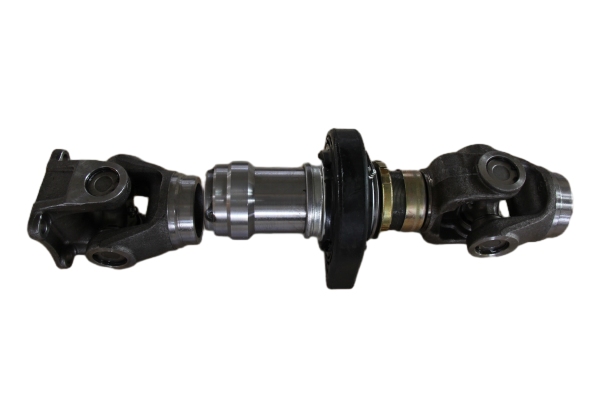
Dongfei 140 Series Transmission Shaft
4. Manufacturing Processes of Transmission Shafts
The production of transmission shafts involves a series of manufacturing processes that collectively determine the quality and performance of the final product. Key steps include:
4.1 Forging
Manufacturing high-strength transmission shafts often uses forging. Forging improves the internal grain structure by means of high pressure shaping of the material, hence improving fatigue resistance and toughness. Depending on the complexity and needed accuracy of the shaft, both open-die and closed-die forging processes are used.
4.2 Precision Machining
Usually, transmission shafts undergo precision machining techniques including turning, milling, drilling, and grinding following forging. These procedures hone the shaft to the precise measurements and surface treatments called for in the design. Especially for parts with close tolerances and little run-out to guarantee best performance in dynamic applications, high accuracy is essential.
4.3 Surface Finishing and Heat Treatment
Heat treatment techniques such as quenching, tempering, and annealing are used to further improve the mechanical characteristics of transmission shafts. These therapies increase wear resistance, strength, and hardness. Surface finishing methods like carburizing, nitriding, or coating are used to create a protective layer that reduces friction and fights corrosion, hence prolonging the shaft’s service life.
5. Applications in Various Industries
Transmission shafts are integral to a wide array of industrial and technological applications. Some notable examples include:
5.1 Automotive Industry
Transmission shafts are essential in automotive engineering for transferring power from the engine to the wheels. Different powertrain configurations—such as front-wheel drive, rear-wheel drive, and all-wheel drive—use different shaft designs to satisfy particular performance and safety criteria. Off-road vehicles and high-performance sports cars generally call for lightweight but strong shafts to manage severe circumstances without sacrificing driving characteristics.
5.2 Industrial Equipment
Industrial equipment and heavy machinery including machine tools, pumps, compressors, and fans depend on transmission shafts for efficient power delivery. The shafts in these uses have to withstand constant operation under great loads and fight the negative consequences of vibrations and heat changes. Minimizing downtime and guaranteeing production efficiency depend on the design and upkeep of transmission shafts in industrial environments.
5.3 Aviation and Aerospace
Transmission shafts are built for best performance under severe circumstances in aircraft, where weight and dependability are top concerns. Especially preferred are hollow shafts for their low weight and great torsional stiffness, which are crucial in satellite mechanisms, rotorcraft, and aircraft propulsion systems. Aerospace industry strict criteria call for exact production and quality control procedures to guarantee safety and efficiency.
5.4 Renewable Energy and Other Applications
Wind turbines, marine propulsion systems, and many other renewable energy technologies all employ transmission shafts as well. For example, in wind turbines, the shafts have to endure cyclical stress and environmental exposure while efficiently converting and transferring wind energy into electrical power. Renewable energy solutions’ ongoing evolution is pushing shaft design innovation with an eye toward improved durability, efficiency, and environmental sustainability.
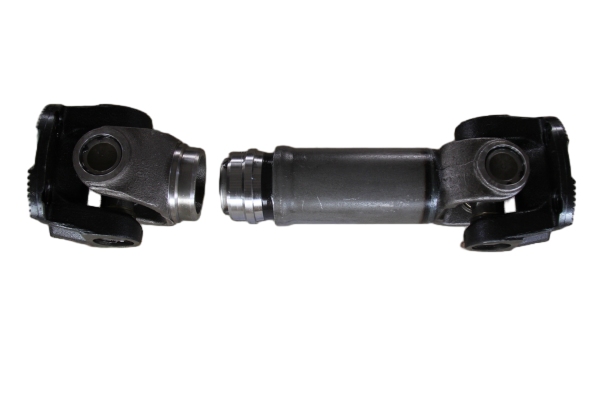
Howo and FAW Jiefang Transmission Shaft
6. Maintenance and Inspection
Given their critical role, transmission shafts require regular maintenance and inspection to ensure continuous, reliable performance. Routine checks should include:
-
Visual Inspections: Regularly examine shafts for signs of wear, corrosion, or misalignment.
-
Vibration Analysis: Monitor for abnormal vibrations that could indicate imbalance or impending failure.
-
Lubrication Checks: Ensure that lubrication systems are functioning correctly to minimize friction and heat buildup.
-
Dynamic Balancing: Periodically verify that the shafts remain dynamically balanced, especially after repairs or modifications.
For high-precision or high-value systems, advanced diagnostic tools and sensors are increasingly employed to monitor shaft health in real time. Predictive maintenance techniques can identify potential issues before they result in catastrophic failures, thereby reducing downtime and maintenance costs.
7.Future Trends and Innovations
The field of transmission shaft technology continues to evolve, driven by advances in materials, manufacturing techniques, and digital technologies. Key future trends include:
Lightweight and High-Performance Materials
The demand for energy efficiency and reduced emissions is pushing the development of lighter, stronger materials. Advanced composites, titanium alloys, and high-performance steels are increasingly being explored to produce shafts that offer superior strength-to-weight ratios without compromising durability.
Smart Monitoring and IoT Integration
Integrating smart sensors and Internet of Things (IoT) technology into transmission shafts is revolutionizing maintenance and operational efficiency. Real-time monitoring systems can collect data on vibration, temperature, and stress levels, enabling predictive maintenance and timely interventions that enhance overall system reliability.
Additive Manufacturing
Additive manufacturing (3D printing) is emerging as a promising technique for producing complex shaft geometries that were previously impossible or cost-prohibitive to manufacture. This technology allows for rapid prototyping and the production of highly customized solutions, potentially reducing material waste and lead times.
Environmental Sustainability
As industries move toward greener practices, reducing energy losses and improving system efficiency become critical. Innovations in lubrication, thermal management, and surface treatments aim to lower friction and heat loss, contributing to more sustainable and environmentally friendly power transmission systems.
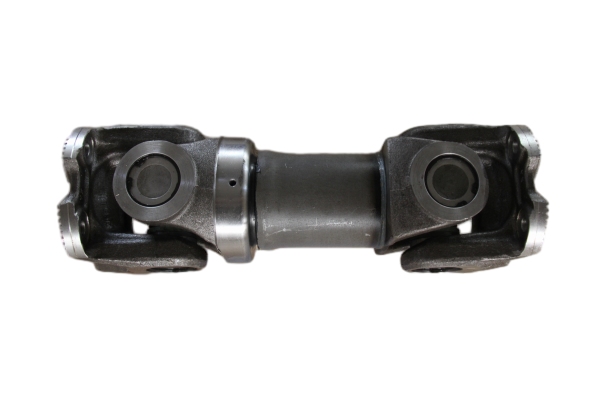
Dongfeng Tianlong Transmission Shaft
8.Conclusion
A foundation of contemporary mechanical systems, transmission shafts guarantee the effective and consistent power transfer over a broad spectrum of uses. Whether in heavy machinery, cars, aerospace, or renewable energy systems, the design and performance of these shafts directly affect the general functioning and lifetime of the equipment. Engineers keep pushing the limits of what transmission shafts can do by means of careful material selection, precision design, and innovative manufacturing methods.
Looking forward, the combination of smart technology and the use of creative materials and manufacturing techniques promises to increase even more the performance of transmission shafts. These developments not only help to increase efficiency and safety but also help to satisfy the changing needs of businesses all around by means of their significance. Anyone involved in the design, manufacture, or maintenance of mechanical drive systems must therefore have a thorough awareness of the ideas and methods described in this book.
All things considered, the whole information offered here describes the basic ideas, categories, and design issues of transmission shafts. It also investigates their many uses and emphasizes the need of constant upkeep and future inventions. The field of transmission shaft design is set to provide solutions that satisfy the always increasing demands of modern industry by combining both conventional engineering techniques and innovative technology developments.

